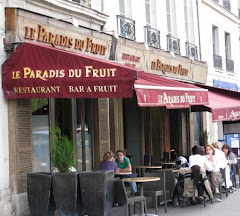
From Bill Grimes:
We are not yet under quarantine but need to watch for this pest in our own trees. I'm not trying to be alarmist but would like to encourage vigilance.
Click here for more information and photos.
Bill
James Bathgate, CRFG Board member from North San Diego County, asked that chapters put the following in their newsletters and on groups such as this:
Citrus Industry Fights New Pest
The letter came while we were out of town. It was in the stack of mail which greeted us on our return. Not quite a summons to report to the draft board or the county courts, but serious nevertheless. We weren't completely surprised. We'd heard rumors.
"CA Dept. of Food and Ag, Pest Eradication Branch"
Dear Grower—
Recently, a serious pest called Asian Citrus Psyllid (ACP)was detected in the northern area of San Diego County…….your grove is in the quarantine area.
The Asian Citrus Psyllid is not terribly destructive but it typically ends up carrying Huanglongbing (HLB) an extremely destructive bacterial disease. It is important to control the Psyllid before it begins to carry Huanglongbing (also called Citrus Greening Disease). Trees affected by the Psyllid in southern counties now have quarantine areas and eradication efforts are underway.
Should the Psyllid eventually carry the HLB disease it would be a very significant blow to the citrus industry. The disease has been found in several southern states. Florida is losing 10 to 12 percent of citrus production per year.
The characteristic adult Psyllids are winged and vaguely aphid like. Adults are one eighth inch long and sit at 45 degrees from the surface of new leaves. Psyllid eggs are yellow and deposited on tender citrus leaves. The young nymph stages develop waxy tubules and feed on the leaves causing them to burn back. Nymphs are small, wingless with red eyes.
If the Psyllid is carrying Huanglongbing, the disease will cause mottling of the leaves and misshapen bitter fruit with dark seeds. New shoots will be yellow. The tree will decline and die. In groves where the disease is found the trees are removed to limit spread of the disease.
What can gardeners do? Maintain a regular inspection of any host plants--citrus and many citrus relatives, orange jasmine, and curry leaves. Don't move host plants especially from out of state. If you find Psyllid evidence, call your local Agriculture commissioner or the CA Dept of Food and Agriculture hotline—1 800-491-1899.
The Asian Citrus Psyllid does not attack fruit and the fruit may be moved within a quarantine area. The fruit must be cleaned if it is leaving the area. The Psyllid lives on leaves and stems.
The CDFA, USDA and the Citrus Research Board are trapping and increasing inspections. Your help is critical to the control.


















